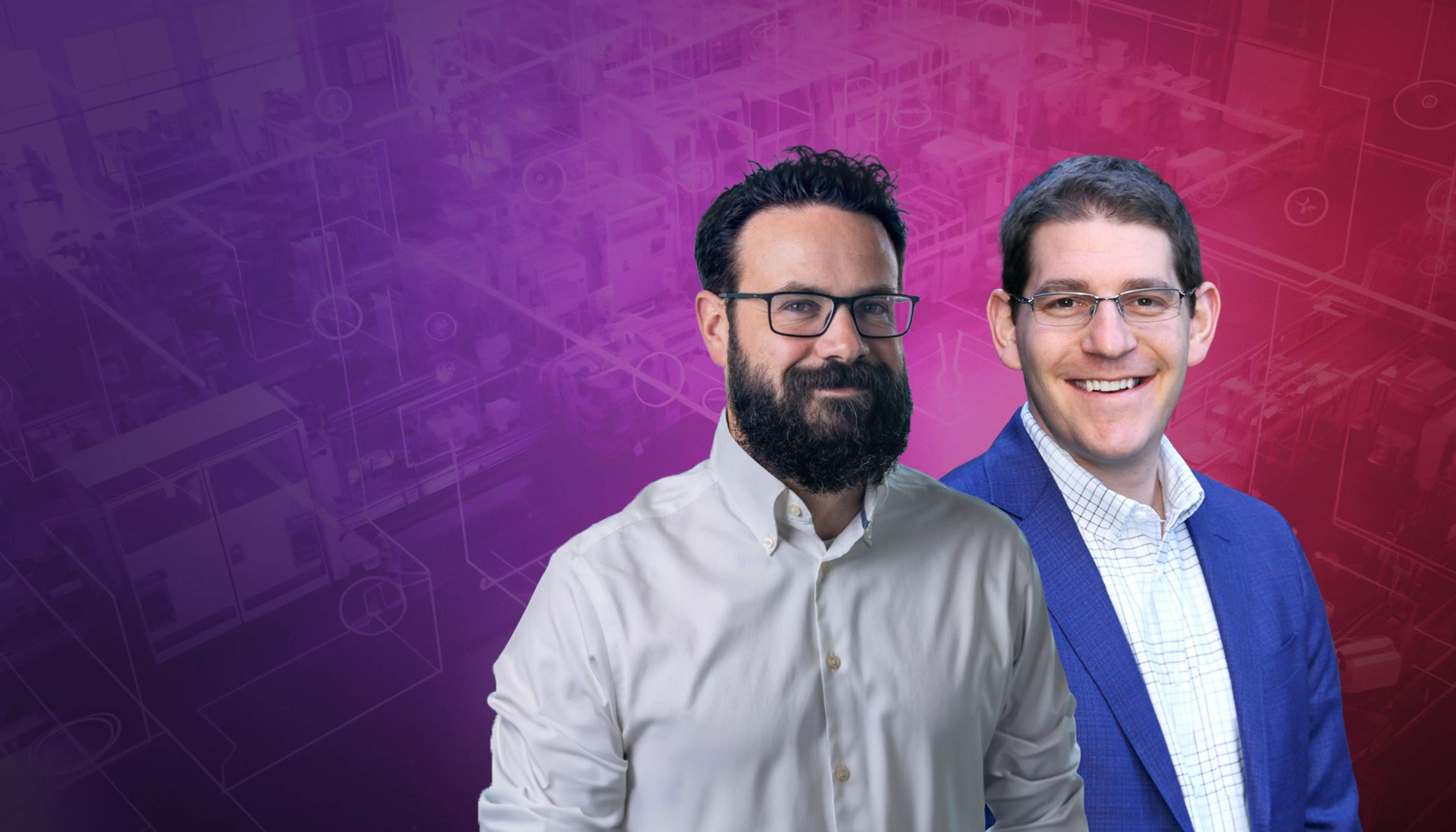The first half of 2025 has provided a business environment rife with ambiguity, volatility, and uncertainty. Without an end in sight, many industrial companies - large and small - are scrambling to reassess their supply chains and determine how and where to integrate AI into their operations.
Last week, our team had the privilege of sponsoring and participating in the 2025 Manufacturing Leadership Summit. Hosted by the Chief Executive Group, this exclusive conference brings together more than 100 CEOs and senior leaders from small to medium-sized manufacturing companies. This immersive two-and-a-half-day experience featured site visits to cutting-edge facilities, thought-provoking keynotes, and intimate roundtable discussions focused on the future of manufacturing. As specialists in digital transformation for the manufacturing sector, we were eager to absorb and share the key insights that emerged.
Thriving amid disruption: the new manufacturing landscape
If there was one pervasive theme throughout the conference, it was this: volatility is the new normal. Manufacturing leaders are navigating an intricate web of challenges from fluctuating tariffs to persistent supply chain vulnerabilities.
The question is no longer if disruption will occur, but how quickly you can respond and adapt.
Forward-thinking manufacturers are proactively strengthening their operational resilience by implementing several key strategies.
One crucial approach involves strategic diversification of sourcing, moving away from reliance on single suppliers or geographically concentrated supply chains. This reduces vulnerability to disruptions caused by geopolitical events, natural disasters, or localized economic instability. Furthermore, many manufacturers are actively pursuing regionalization initiatives to create shorter and more localized supply chains. This not only decreases transportation costs and lead times but also enhances responsiveness and reduces the risks associated with complex global logistics networks.
Complementing these efforts is the adoption of agile operating models. These models emphasize continuous learning and the integration of real-time feedback into strategic planning processes, allowing manufacturers to quickly adapt to changing market conditions, unforeseen challenges, and emerging opportunities. By embracing these interconnected strategies, manufacturers are building robust and adaptable organizations capable of navigating the complexities and uncertainties of the modern global landscape.
- TXI’s Perspective: We believe that “agile” gets a bad rap outside of the tech industry. Too many people believe that agile is an excuse for lack of planning. The central trade-off between agile and waterfall methodologies revolves around a fundamental question: When should requirements be locked? Both methodologies rely on a north star vision for what the team is going to accomplish. In agile, requirements evolve throughout the project, allowing teams to learn, adapt, and change course as they gain more information. With waterfall, requirements are defined upfront, providing clear dependencies for complex planning, predicting timelines, and fixed budgets. Given times of uncertainty, having a bias towards an agile approach can lead to better performance. To get started, we recommend management teams have intentional discussions about which decisions need to be made before work can start and which decisions can wait until you have more information.
The rise of AI and data-driven strategies in mid-market manufacturing businesses
The summit highlighted a significant shift in how manufacturers are approaching technology. The discussions around AI have matured considerably, moving beyond basic automation to embrace the transformative power of advanced AI systems, particularly those leveraging large language models. However, a key takeaway was the importance of strategic implementation. Experts emphasized focusing on specific, high-value use cases with clear, measurable ROI, rather than adopting technology for its own sake.
A critical prerequisite for realizing the potential of AI, and a recurring theme throughout the summit, is a robust data infrastructure and sound data governance. Without prioritizing data quality, manufacturers risk falling into the "garbage in, garbage out" trap, hindering their ability to get the most out of their business. In conversations at the summit, we heard many companies actively struggling to bridge the gap between IT and OT, while others were focusing on bridging the gap with empathy and a focus on a common goal.
The revolutionary nature of AI was also underscored, with presentations emphasizing its ability to amplify organizational capabilities, provided there's a commitment to cross-functional collaboration and the reimagining of core processes to effectively leverage modern technology.
- TXI’s Perspective: To manage this data infrastructure, we recommend manufacturers adopt integrated views that support core processes. These often encompass information from various departments, machinery, and operational processes. Compelling examples included the implementation of real-time dashboards for end-to-end production visibility and predictive models that proactively address equipment failures. AI presents a powerful new toolkit that can be used to change an organization for the better. The starting point is cleaning, governing, and integrating the appropriate data.
The human element: leadership and workforce transformation
We were moved by the sessions and tours focused on the human side of manufacturing transformation. Keith Ferrazzi, former CMO of Deloitte and Starwood, championed the concept of "Teamship" – agile, cross-functional teams that outperform traditional hierarchical structures in driving innovation.
He recommended that leaders shift their focus from measuring employee engagement to cultivating genuine team effectiveness through:
Breaking down departmental silos
Creating space for psychological safety and honest communication
Enabling rapid experimentation and learning
Perhaps most importantly, forward-thinking organizations are cultivating "T-shaped" talent – individuals with deep expertise in specific areas combined with broad knowledge across disciplines. This interdisciplinary approach is proving essential for driving innovation and adapting to rapidly changing market demands.
Another common theme throughout the summit was the skilled blue collar labor shortage in America. Many highlighted how manufacturing jobs have an unnecessarily bad reputation, but MAGNET, which hosted the group on the evening of the event, is changing that one high school classroom at a time. What stood out to us is that they focus on showing rather than telling what it’s actually like to build products. And what a powerful showcase they have - working with regular tooling, they allow students to build toy racecars, cookie cutters, and more while exploring what it means to work in a plant.
- TXI’s Perspective: The blue collar workers entering the workforce today are drastically different from those you hired 30 years ago. They are true digital natives that utilize technology for everything in their lives. You expect them to operate machinery efficiently and effectively. They expect you to provide easy-to-use digital tooling from which to operate that machinery and do their jobs. Your internal digital and data products will determine their success and, to a large degree, their loyalty to your organization.
Supply chain: navigating tariffs
Kerim Kfuri from the Atlas Network gave an address focused on navigating a global supply chain during a period of uncertain tariffs. He emphasized that supply chain impacts everyone, as professionals are also consumers. He stressed the need to balance tradeoffs within the supply chain, noting the fundamentally divergent interests between buyers and sellers, to achieve an equilibrium through manageable imbalances.
Kfuri cautioned against the perceived appeal of completely rearchitecting supply chains due to the rapidly shifting global landscape, making it risky to lock in any long-term changes. He identified five key factors requiring management: materials, output, resources, technology, and costs. Based on his ground-level experiences in China, he conveyed a positive sentiment with a desire to collaborate and communicate to push through the season of tariffs. In the current uncertain tariff environment, Kfuri advised clients to consider adjusting payment terms as a more flexible approach than halting trade altogether.
He framed tariffs as pressure points demanding both strategic and operational responses, urging a separation of controllable and uncontrollable variables, referencing the COVID-19 pandemic as a driver for renewed supply chain design focus. He outlined a handful of ways to handle tariffs including "absorption" and "deferral." Operationally, he suggested re-engineering pricing, modifying cash flow terms, and exploring alternative sourcing, all while maintaining essential relationships, particularly in Southeast Asia.
A key example involved restructuring payment terms where the importer receives goods quickly, generates revenue, and settles later, fostering trust and liquidity. Kfuri also pointed to Africa as a growing industrial focus, with China actively relocating manufacturing expertise and resources there.
- TXI’s perspective: We believe that your supplier management capability, along with contract management and strong supplier relationships, presents a massive opportunity to proactively manage the potential risks of economic and geopolitical uncertainty. Sourcing and Procurement Control Towers and Digital Twins provide a dynamic virtual replica of your entire sourcing ecosystem that enables real-time scenario planning and risk mitigation. They are increasing in value in the current world of supply chain upheaval. We have written about their value here.
The current state of AI adoption in mid-market businesses
Mid-market companies often lag behind enterprise-level organizations in AI adoption due to limited resources, fragmented data systems, and talent shortages. Despite these challenges, many mid-market firms are starting to embrace AI, particularly in areas like…
Customer personalization. For example, McKinsey estimated a 3-5% revenue increase for a telecom company by automating product personalization at scale.
Predictive analytics to drive virtually any aspect of business operations.
Operational efficiency. One Bain study estimated a monthly savings of 7,000 hours for a large telecom’s procurement team by deploying AI.
However, scaling AI remains a hurdle. While AI experiments can happen fast with little coordination, scaling requires strategic alignment and ongoing incremental investments.
Many of the themes of the conference are highlighted in our 2025 AI Readiness Briefing. Based on our own research, Artificial intelligence (AI) has changed the game for mid-market companies. But more than two years into the new era of AI, 63% of this group still lacks mature AI capabilities. That's the bad news. The good news: right now, mid-market companies have a once-in-a-lifetime opportunity to leverage AI as a transformative force.
TXI’s proprietary AI readiness briefing synthesizes findings from 40 industry reports on AI and AI readiness as well as TXI’s original research on mid-market AI readiness. In it, you’ll find an assessment of the current state of AI adoption among mid-market businesses, a summary of challenges mid-market companies face, and strategies for overcoming those challenges. We also offer tips for selecting the right first problem to solve with AI, making the build-or-buy decision, and working with an outside partner.




